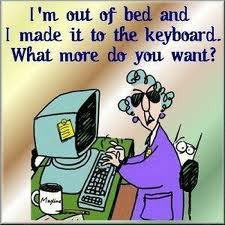The goal of my GAME plan has not changed. However, I have learned that creating digital portfolios requires a lot of organization. One major part of this project that I quickly learned, is to teach mini lessons about basic computer skills to students. For example, I just assumed students would be able to scan and save their documents, however, I soon learned that this required practice. Students were able to scan the material, but saving it was a different story. I have also decided to use rubrics to assess the work as it is completed. Some students need a checkpoint list to keep the portfolio up to date. This has also turned into a great way to assess the technology component being taught and to help monitor and assess student achievement.
I want the portfolios to replace the traditional keeping of work. With an electronic portfolio, information can be easily stored in a computer hard drive, floppy disc, CD or other. This would take up very little physical space and would be accessed with minimal effort. I have also had students to work on collaborative student work and saved into each others folders that otherwise would not be able to be included in each participating students portfolio. We have started enhancing the portfolios with sound, music, pictures, graphics and even video. Thus making it easier and more appealing to the student and parent. Students are also gaining experience creating, selecting, organizing, editing and evaluating the portfolios.
Immediate adjustments that I have made to the plan are to include a digital storyboard of pictures that I have taken throughout the year. At the end of the school year, I always copy our school year photos onto a DVD. This year, I will be creating a story to go along with the photos and copy these at the end of each students portfolio. This project is an on-going project and will not be completed until the end of the school year.
Electronic portfolios are a technology based form of authentic student based assessment. They are a collection of student work over a period of time. Portfolios are both practical and effective because of the rubrics used. The benefits include clear set standards or expectations, quick access, easy storage and increased technology skills. A multi-media computer, a scanner and a software package are the basic technologies needed to create an electronic portfolio. The templates are a way to organize the contents of the portfolio.


